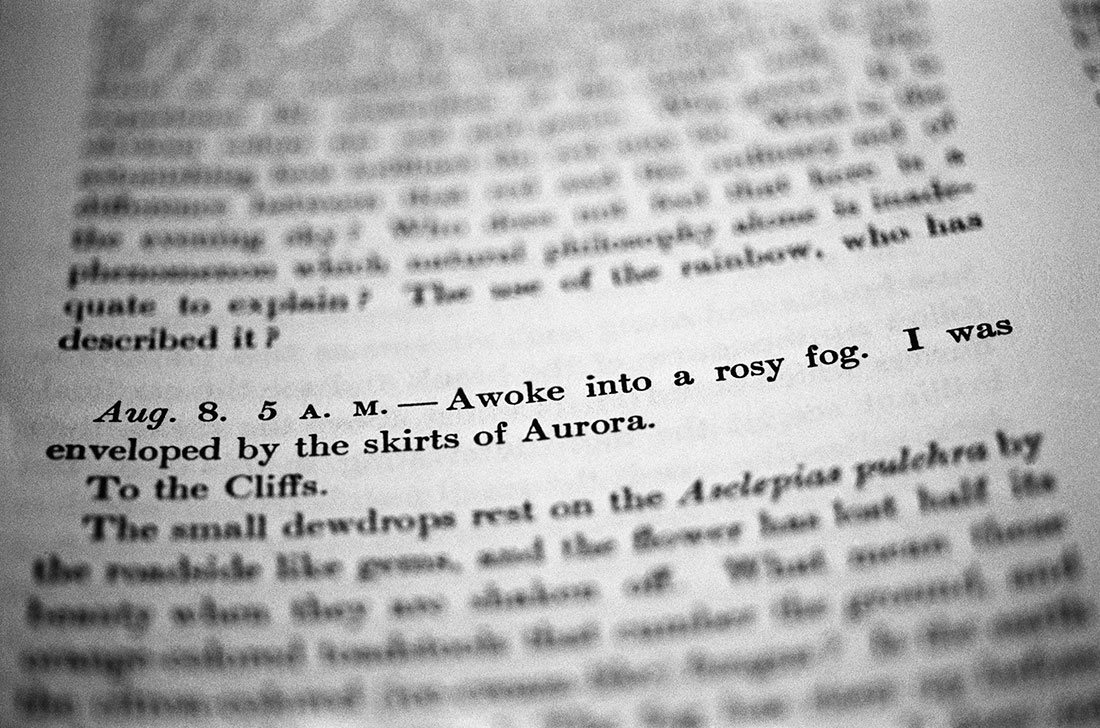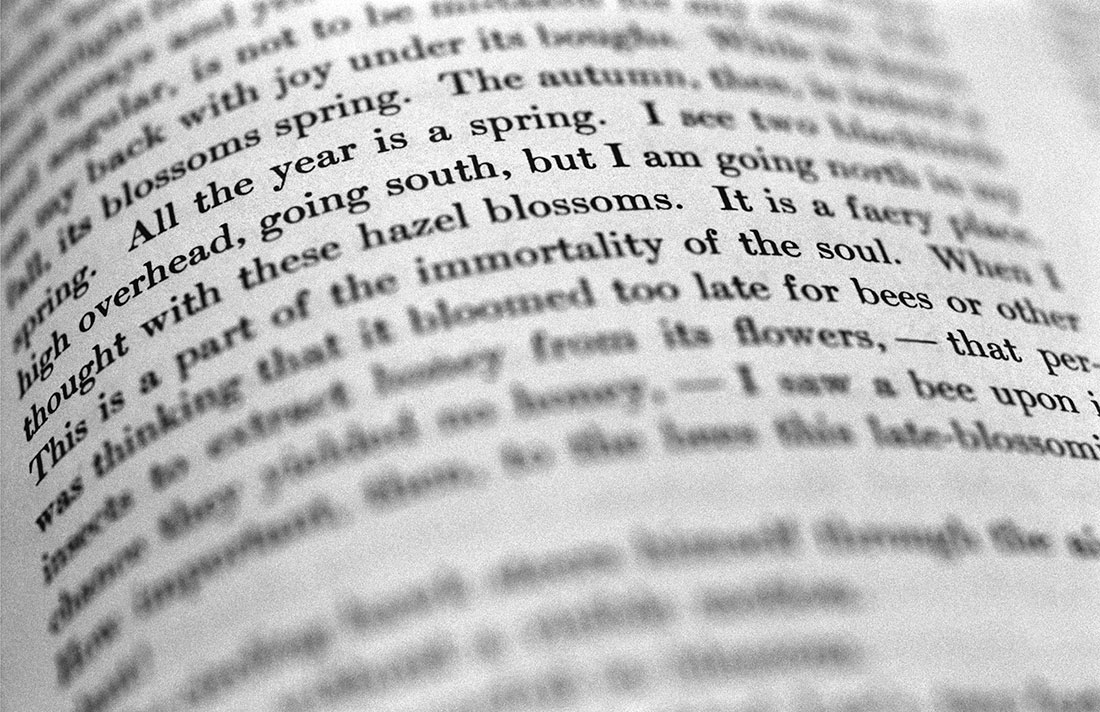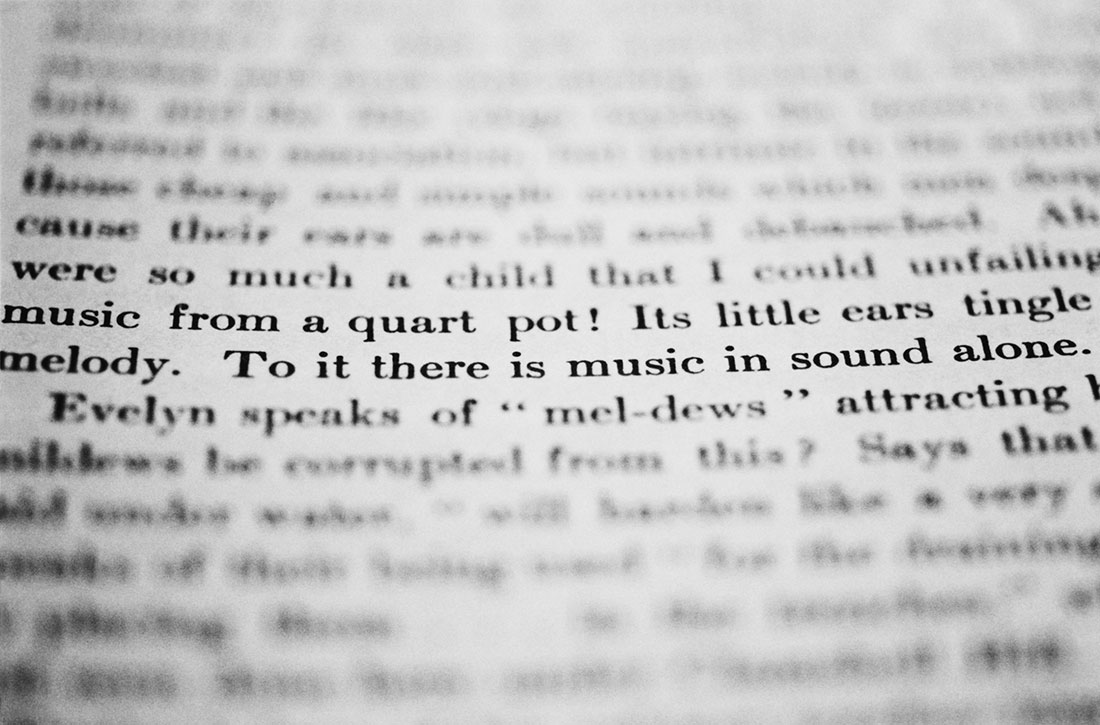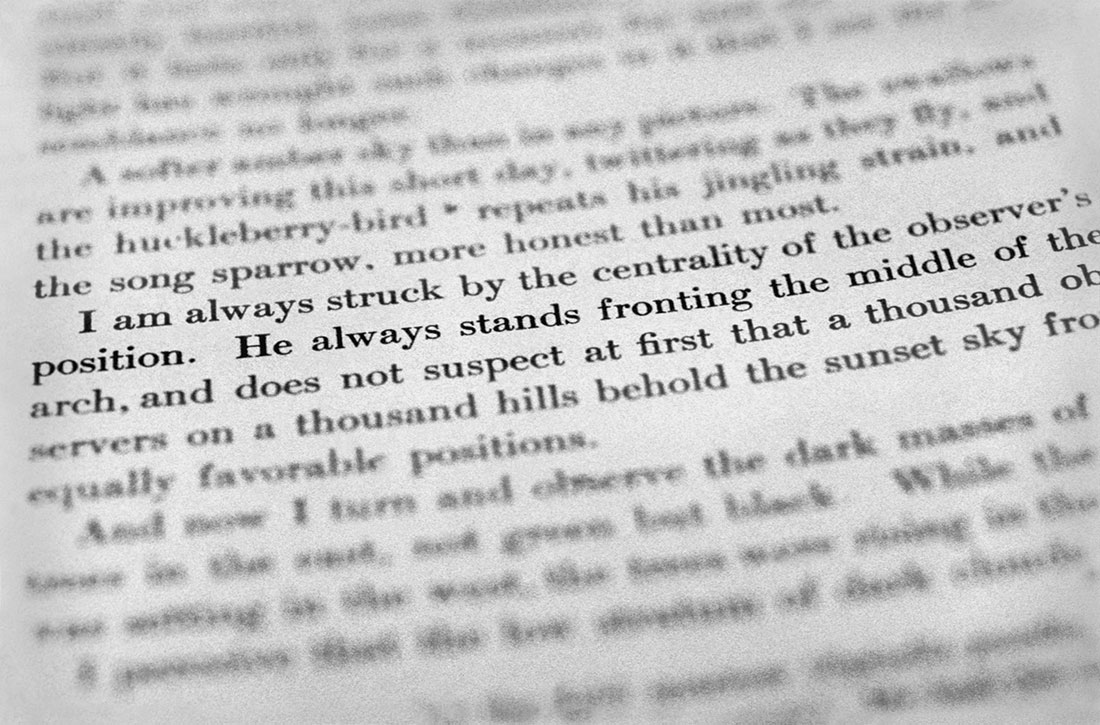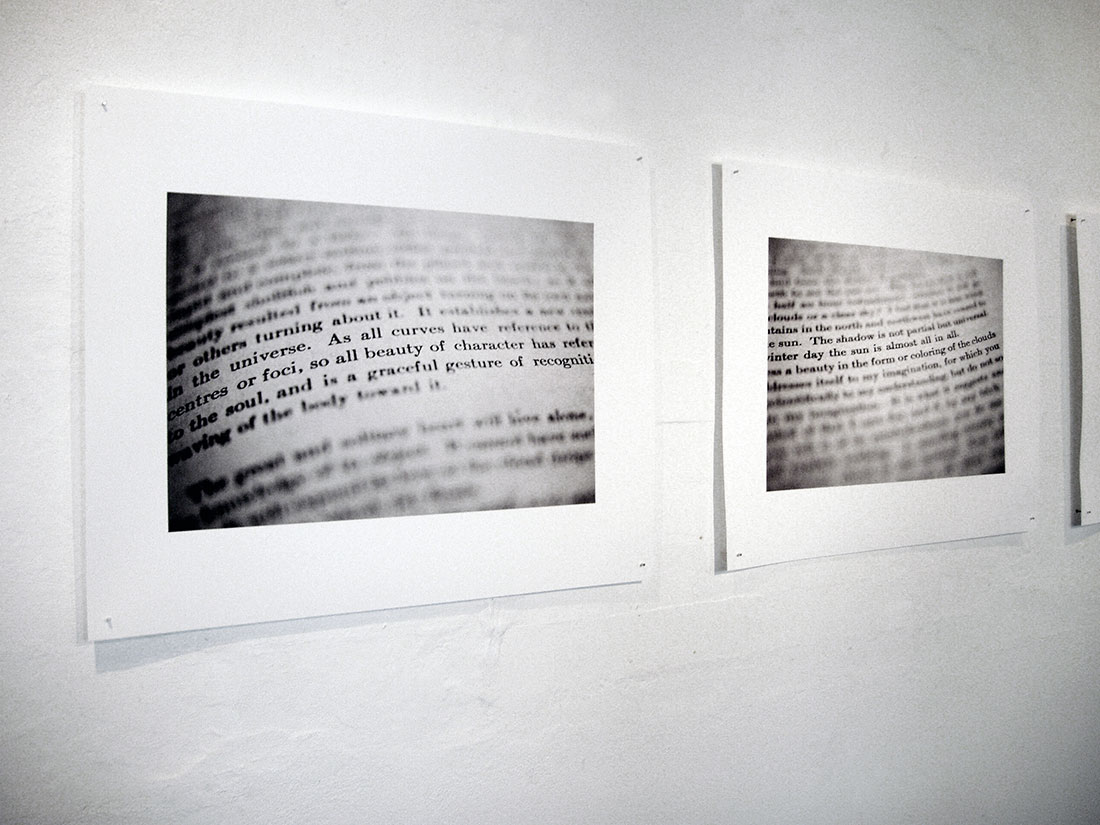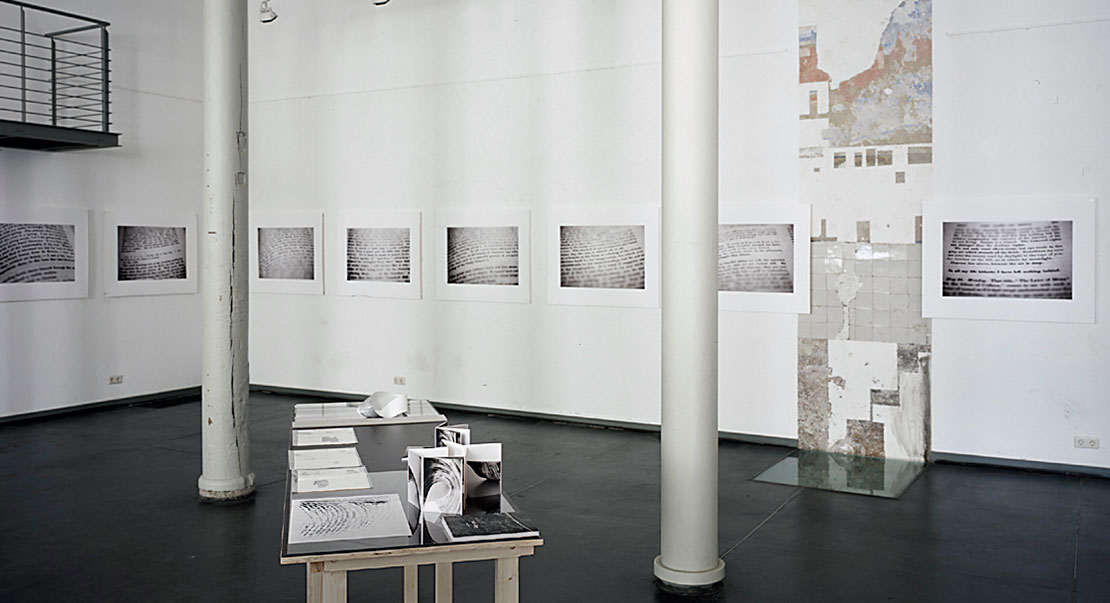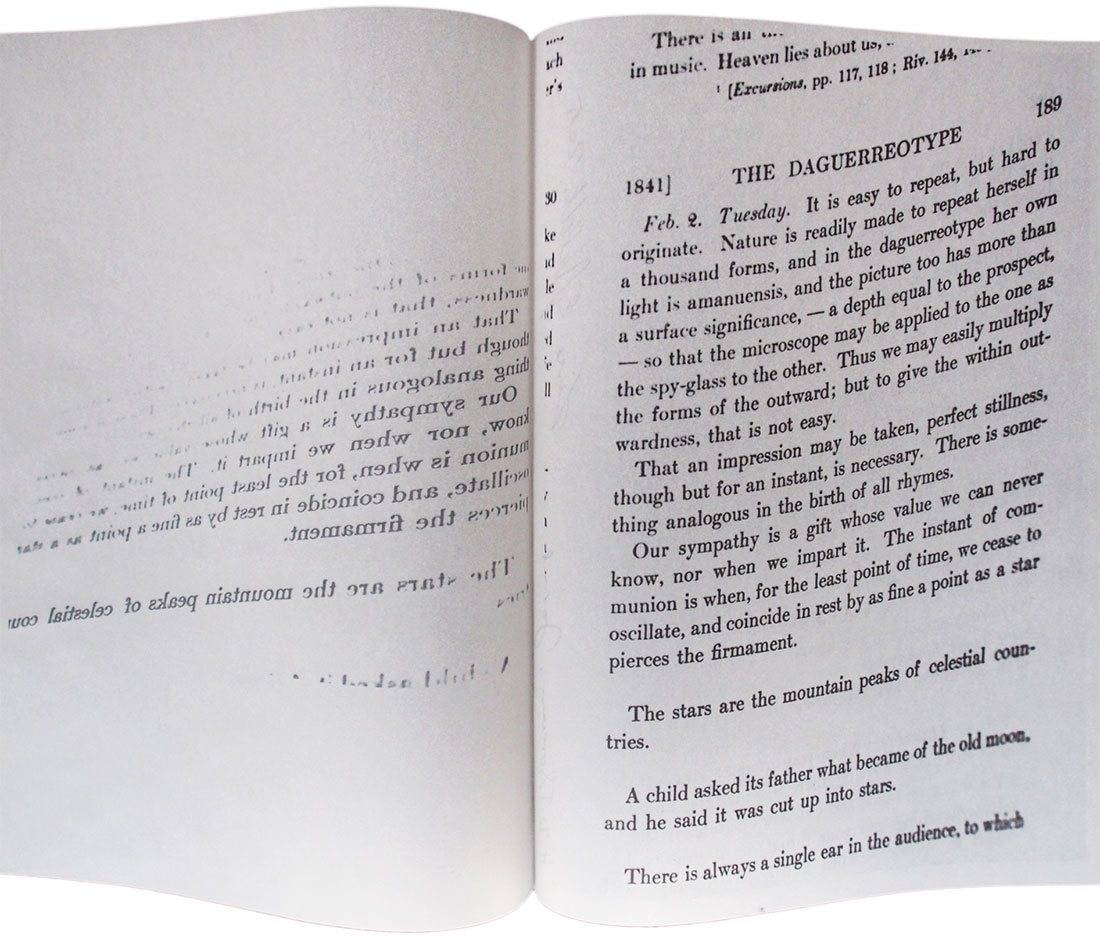Fotografien aus / photographs taken from: The Journal of Henry D.Thoreau: Fourteen Volumes bound as two, 926pp (1837-1855), Dover Publ. NY, 1962
Die Fotografien der Reihe „Journal Thoreau“ zeigen Textstellen aus dem Journal des Naturphilosophen Henry David Thoreau und überführen seine Texte fotografisch zurück ins Bild: Ein Beitrag zur Landschaftsfotografie.
Mit seiner Veröffentlichung ‚The Pencil of Nature’ im Jahr 1844 führt William Henry Fox Talbot das einflussreiche Paradigma der Fotografie ein, dass sich die Natur damit selbst aufzeichne. Etwa zeitgleich bezieht der amerikanische Schriftsteller und Philosoph Henry David Thoreau 1845 seine Blockhütte ‚Walden Hut’, um ein einfaches Leben in und mit der Natur zu erproben. Thoreau erweist sich als Virtuose in der Beobachtung und Reflexion von Natur, und wie er sie, ganz anders als Talbot, literarisch verarbeitet. Thoreaus Studien sind weit gefasst und präzise zugleich, inspiriert, meditativ. Sein ‚Journal’ ist wie ein unermesslicher, vielfältiger, riesiger Steinbruch: ein Aufzeichnen von und ein Schreiben nach der Natur. In diesem Kontext findet sich im Journal auch eine Stelle zur Daguerrotypie wieder, anhand der sich die Natur, wie Thoreau feststellt, sowohl wie unter einem Mikroskop als auch wie durch ein Fernglas gesehen darstellen lässt und auf diese Weise Anlass zu poetischer Betrachtung wird.
The photographs in the “Journal Thoreau” series show passages of text from the journal of natural philosopher Henry David Thoreau and photographically transport his texts back into the image: this series is a contribution to landscape photography.
With his publication ‘The Pencil of Nature’ in 1844, William Henry Fox Talbot introduces the influential photographic paradigm that nature uses photography to record itself. At about the same time, the American author and philosopher Henry David Thoreau moved into this ‘Walden Hut’ in order to try out a simple life in, and with, nature. Thoreau proves to be a virtuoso in observing and reflecting upon nature, and in the manner in which, entirely differently to Talbot, he processes it literarily. Thoreau’s studies are sweeping and precise simultaneously; they are inspired, meditative. His ‘journal’ is akin to an immeasurable, diverse, giant quarry: a recording of, and a writing after, nature. In this context the journal also contains a passage on daguerrotypy, on the basis of which Nature, as Thoreau notes, can be depicted as seen both under a microscope and through a telescope and, in this manner, inspires poetic contemplation.
